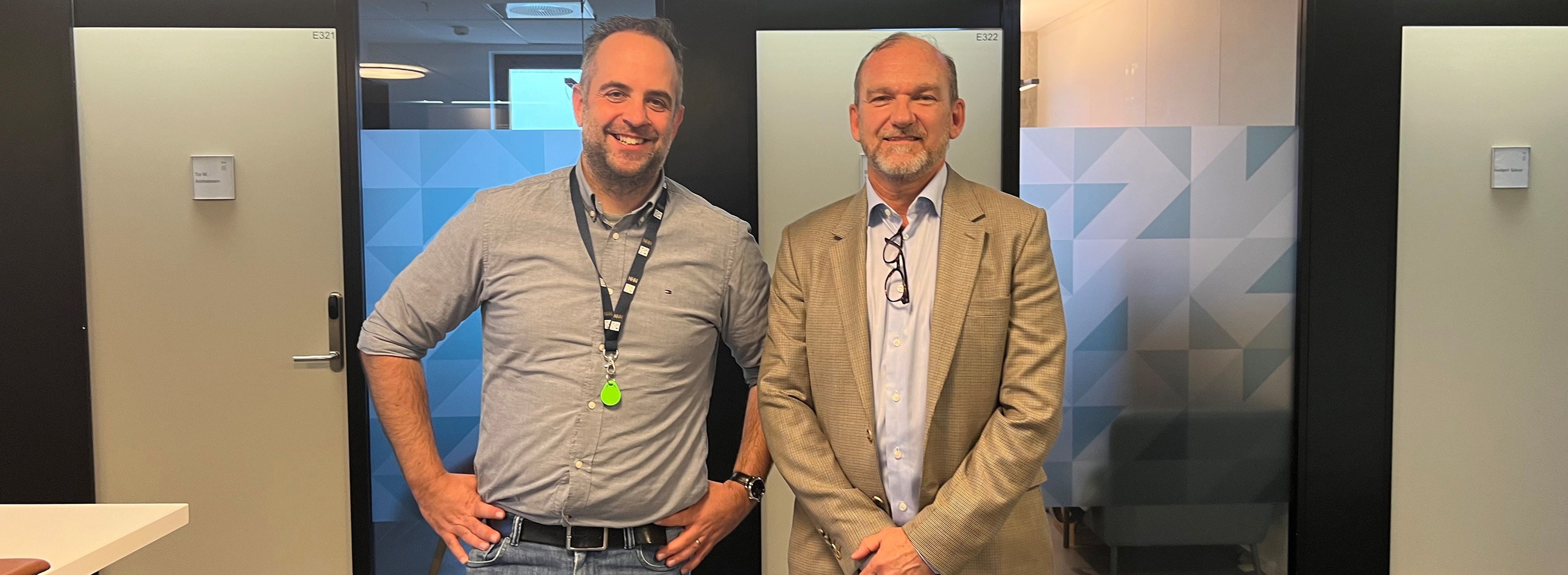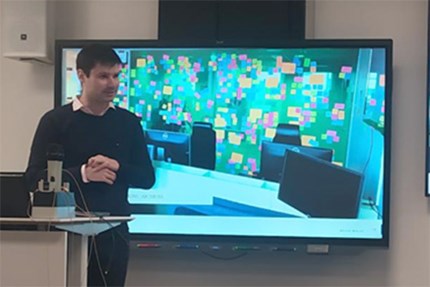
International guests presenting their work for DIG
Research is very much a social activity where our work gets stronger when interacting with others. In the DIG research centre we are active to invite guest from other universities and business schools to share their ongoing research.
When they visit, they stay for a couple of days, which offers an opportunity for faculty and PhD graduates to interact, get inspired and maybe engage in research collaboration that lasts throughout a person’s academic career.
In the autumn semester we had the following guest visiting:
- Paul Jensen, University of Melbourne
- Anne Ter Wal, Imperial College London
- Mickaël Buffart, Stockholm School of Economics'
- Nicolai Foss, CBS and professor II at NHH
The effects of University-Industry collaboration subsidies on firm performance
In October we invited Professor Paul Jensen from the University of Melbourne to deliver a seminar on a topic that had “DIG” written all over it: “The effects of University-Industry collaboration subsidies on firm performance.”
In his paper, where Paul and his co-authors study 5000 Australian research grant applications, to investigate whether receiving subsidies for university-industry collaboration actually leads to bottom-line benefits for firms involved.
While the research question would appear to be straight-forward, investigating this issue is not as the issue is riddled with problems of selection. For example, firms that receive such support might be different and high-performing than firms that do not qualify for such grants.
To address this problem, Paul and his colleagues make use of an empirical design where they identify firms’ similar firms but with marginally different scores on both sides of the threshold of receiving the grant or not.
Based on their empirical analysis they found evidence that firms that received such subsidies had 11.4 percent higher sales levels compared to similar firms that did not receive such a subsidy.
Showcasing strategies in entrepreneurs’ quest for venture capital funding—Evidence from Twitter
In the beginning of November, Anne Ter Wal from Imperial College London presented a entrepreneurship paper with the title: “Showcasing strategies in entrepreneurs’ quest for venture capital funding—Evidence from Twitter.”
In a nutshell, this paper studies which strategies London-based technology entrepreneurs use to increase venture’s saliency as well as legitimacy towards prospective investors by relying on textual analysis of Twitter messages.
Through messaging behaviour on twitter, Anne and his co-authors, are able to identify different show-casing strategies, i.e.: how direct versus indirect messaging, how specific versus generic messaging, and how similar their messages are compared to their role models. These show-casing strategies are subsequently linked to the probability to obtain finance from venture capitalists.

Attentional dynamics and ambiguity in strategic conversations
A week later, Mickaël Buffart from the Stockholm School of Economics presented his working-paper with the title: “Attentional dynamics and ambiguity in strategic conversations”.
In this study, Mickaël and coauthors investigate how specific issues or initiatives become part of the strategic agenda of an organization. To do so, they examine the evolution of strategy conversations in a leading IT and consulting service company undergoing strategic change by tracing the conversations that take place on Slack, an instant messaging program.
As a result of their mixed method analysis combining intensive qualitative methods with topic modelling, they uncovered three types of attentional dynamics:
(1) parallel attention characterized by equivocality-related ambiguity,
(2) evolving attention linked with sensitivity-related ambiguity, and
(3) sporadic attention characterized by opacity silence-related ambiguity.
This analysis offers a nuanced understanding of ambiguity as an inherent part of attentional processes – at times enabling but often constraining strategy work. By elucidating the three types of ambiguity, this paper also has more general implications for research on ambiguity.
Why do companies go woke?
Finally, an old friend of the department dropped by at the end of November, Professor Nicolai Foss from Copenhagen Business School. Nicolai has an adjunct position at the department and twice a year he holds a seminar on a topic that keeps us on our toes.
The title of his last presentation was “Why do companies go woke?”. Woke companies are those that are committed to socially progressive causes, with a particular focus on diversity, equity, and inclusion as these terms are understood through the lens of critical theory.
There is, however, little evidence of systematic support for woke ideas among executives and the population at large, and going woke does not appear to improve company performance. This raises than one overarching questions: why do companies embrace woke policies and attitudes?
All in all, relevant through-provoking and great research enters Norwegian shores through DIG and we are looking forward for more to come in the upcoming semesters. We are also setting up ways that these seminars are open for our partners as many of the topics might have direct implications for your work. You will be updated!
